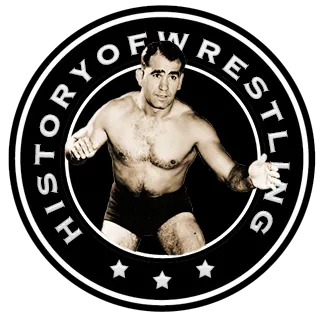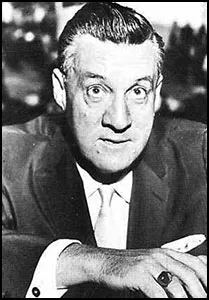by Stephen Von Slagle
NWA Chicago/Fred Kohler Enterprises (a.k.a. “Chicago”)
OWNERS/PROMOTERS:
Fred Kohler (1925-1965)
STATES & PRIMARY CITIES:
Illinois (Chicago)
MAJOR CHAMPIONSHIPS:
World Heavyweight title/Illinois version (1944-1949)
NWA World Heavyweight title (1949-1965)
NWA World Tag Team Championship (1953-1958)
United States Heavyweight title (1953–1964)
Midwest Tag Team title (1953-1961)
International Wrestling Alliance Heavyweight title (1962-1963)
PROMOTIONAL HISTORY:
Throughout the entirety of professional wrestling’s long history, Chicago, Illinois has maintained a position as, arguably, the world’s premier city for the sport. Beginning in 1896, John “Doc” Krone established himself as the Windy City’s top promoter, a position he would maintain for the next 38 years. Meanwhile, Ed White, another one of Chicago’s legendary matchmakers, started his promotional endeavors in 1914. Both Krone and White were well-established and highly successful when a 22-year-old Fred Kohler promoted his first wrestling matches on the city’s North Side in 1925. Chicago residents had a seemingly unquenchable thirst for the mat game and, over time, Kohler, who initially featured junior heavyweights primarily, was able to stage enough cards to build a solid, reliable following for his events. When he drew nearly 10,000 fans to see a World championship encounter between Ali Baba and Everett Marshall, it became clear that Kohler was a force to be reckoned with. By 1934, Krone had retired and in January of 1937, White approached the young Kohler with the idea of creating a partnership, which he accepted. Over the course of the next five years, Kohler and White brought top-level wrestlers to their city and together they staged dozens of successful cards. When White retired in 1942 after thirty years of promoting, Kohler himself had nearly twenty years of experience and was poised to assume the role of Chicago’s pro wrestling czar.
Fred Kohler’s first television program, “Wrestling from Rainbo Arena,” began airing regionally in the Summer of 1946 on WBKB, while his second program, “Wrestling from Marigold,” debuted on WGN in 1948. Then, in 1949, Kohler brokered a deal that landed his Marigold program on the Dumont network, which, in turn, broadcasted his matches across the nation. When Kohler became a member of the National Wrestling Alliance in 1949, he discontinued using his version of the World Heavyweight championship and began recognizing the NWA titleholder. Meanwhile, the unprecedented success of “Wrestling from Marigold” transformed Kohler into, arguably, the most powerful man in professional wrestling. Between booking fees paid to him by promoters that used his wrestlers, television fees and merchandise royalties, Kohler’s annual revenue rose to over $100,000 per year (in 1950), which equates to $1,079,788 in 2020 currency. In addition to having the foresight to develop merchandise items for his promotion, Kohler also began signing his most popular wrestlers to exclusive contracts, including his top box office attraction, Verne Gagne, who was the most popular professional wrestler in the country during the early-1950s. Kohler’s creation of the United States championship in 1953 was as controversial with his peers as it was popular with his audience. His U.S. title worked in the same manner as the NWA World title, requiring promoters who booked his U.S. titleholder to pay 10% of the gross to Gagne, the traveling United States champion. With his powerful “Wrestling from Marigold” program being seen by millions nationwide and a young and very popular Verne Gagne carrying the championship belt, some within the Alliance felt the Chicago-based title was a direct challenge to the status and prestige of the NWA World title.
However, when the DuMont network abruptly cancelled “Wrestling from Marigold” in the Spring of 1955, followed by WGN dropping the show two years later, the loss of coverage and revenue was crippling. By the late-1950s, Fred Kohler Enterprises was teetering on the edge of bankruptcy. Then, a bad situation was made even worse when, in 1959, powerful Montreal promoter (and fellow NWA member) Eddie Quinn entered the Chicago marketplace and began running successful, talent-filled cards in opposition to Kohler. In response, the resourceful Kohler formed a working relationship with Vince McMahon that afforded him access to popular new talent and, more importantly, a successful television program he could use to promote his local cards. By 1960, the threat posed by Quinn had been overcome and Kohler’s business was once again thriving, to say the least. Kohler staged no less than three cards that were held at Comiskey Park in 1960, drawing 74,812 spectators in total. Meanwhile, his normal indoor shows at the Chicago Amphitheater drew another 81,731 fans, meaning Kohler’s thirteen events in 1960 attracted some 156,546 patrons and grossed $223,574 ($1,965,555 in 2020 currency) while firmly re-establishing Chicago as the center of the wrestling world. On June 30, 1961, Fred Kohler Enterprises and the Capital Wrestling Corporation co-promoted another card at Chicago’s Comiskey Park that was headlined by an NWA World championship match between Buddy Rogers and the reigning titleholder, Pat O’Connor. The event drew over 38,000 fans, which set an attendance record for professional wrestling that stood for more than twenty years.
After a lengthy and tumultuous relationship, Fred Kohler withdrew from the NWA for the last time in 1962, and he renamed his promotion the International Wrestling Association. Soon thereafter, his partnership with Vince McMahon ended and along with it, Kohler’s access to television. The IWA tried positioning itself as a competitor to the NWA, but without access to top talent or a way to promote his cards on television, attendance soon plummeted and the endeavor was doomed to fail, especially considering the notorious Jack Pfefer was acting as Kohler’s booker at this point. With Pfefer’s roster of cheap knock-offs like Bruno Nassartino and Slugger Kowalski appearing on his cards, Kohler’s IWA lasted just a single year before Fred Kohler Enterprises went into receivership in 1964. Just four short years after drawing nearly 40,000 spectators to see the Rogers-O’Connor match, a retiring Fred Kohler sold his promotional rights to the city of Chicago to William “Dick the Bruiser” Afflis, Wilbur Snyder and Verne Gagne in 1965.



